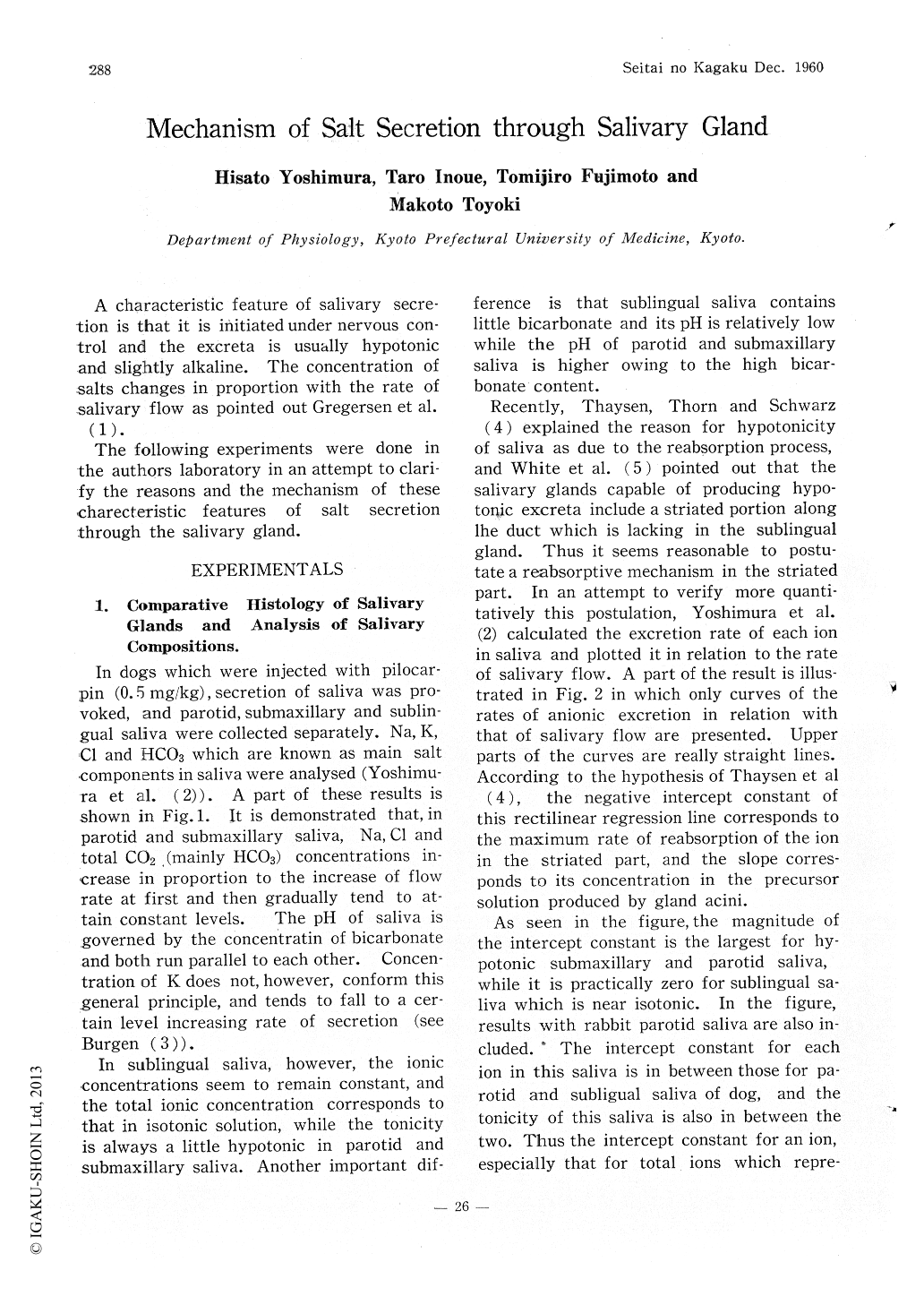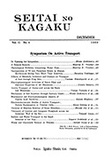- 有料閲覧
- 文献概要
- 1ページ目
1) Much experimental evidence is presented to show that the precursor solution is produced in the gland acinus and, because Na, Cl and HCO3 are reabsorbed from the solution in the striated part along the duct, the final saliva is secreted in the form of a hypotonic solution. The pH of saliva is governed by bicarbonate concentration and is a little alkaline. The bicarbonate is secretednot only from gland acini but is also supplemented by the striated part under activity of carbonic anhydrase. Since the sublingual gland has only a rudimentary striated part, sublingual saliva is isotonic and is nearly neutral.
2) It is ascertainted that a salivogram of submaxillary gland of dog is composed of positive and negative potentials. Postulation is made that the negative potential originates from gland acini and the positive one from the striated part. Both component potentials seem to be ruled predominately by active transport of anions especially of Cl.
3) It is verified with perfused salivary gland that energy rich phosphate of ATP is involved in energy consumption insalivary secretion. Energy liberated by glycolysis and oxidation may be utilized for restoration of secretory energy.
4) Concentrations salts in saliva are not only controlled directly by theire respective concentrations in serum but also by nervous functions which reflect changes in osmotic pressure in systemic blood to salivary compositions. Mineral corticoid can exert some influences upon salivary composition. It follows that salt excretion in relation to water excretion from salivary gland is controlled by the direct influence of serm composition, nervous activties and hormonal functions.

Copyright © 1960, THE ICHIRO KANEHARA FOUNDATION. All rights reserved.


